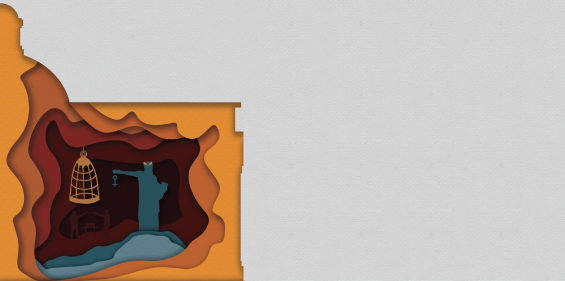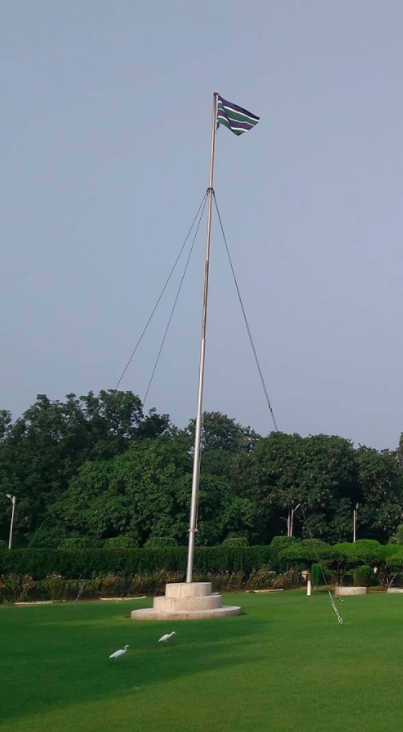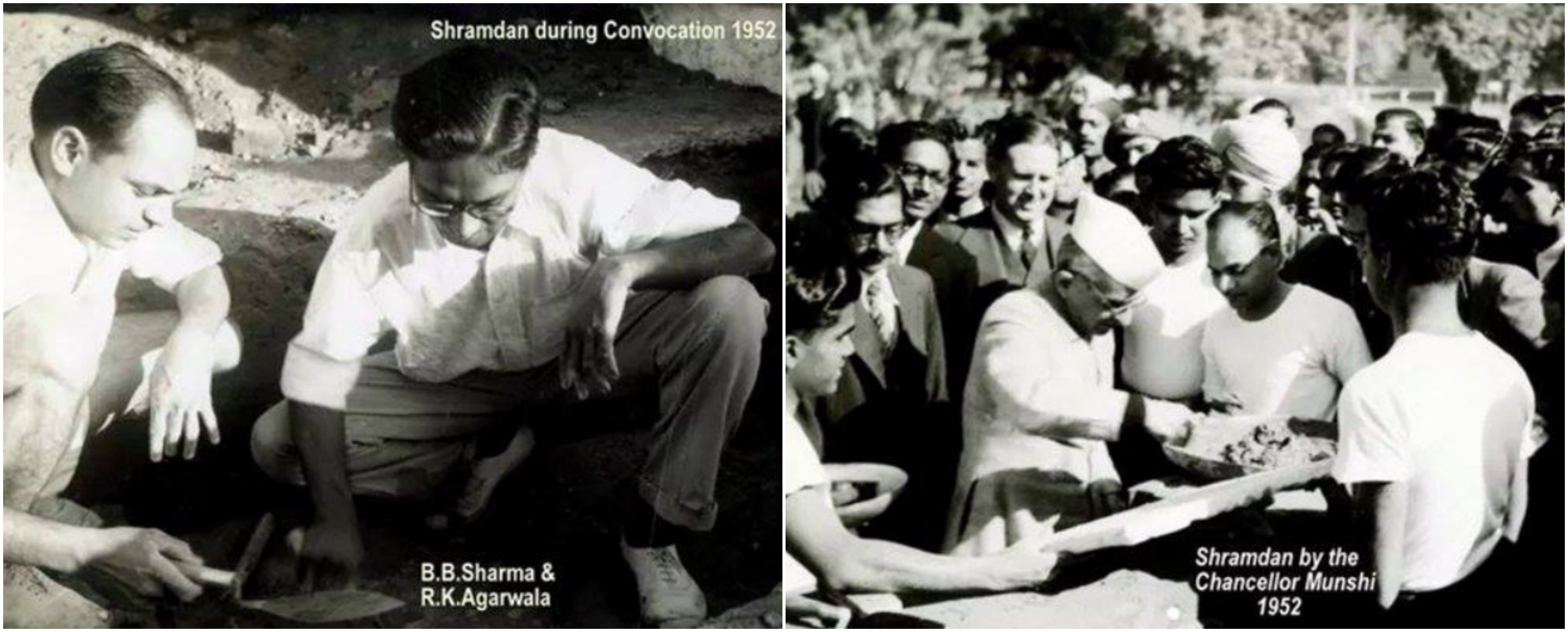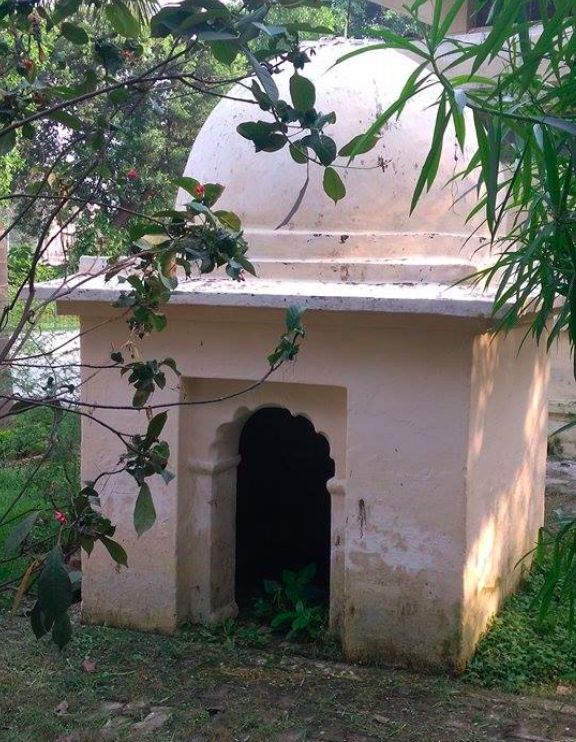

Body of IITR

After some long hours studying (read: pretending to) in the library a week before the end semester exams, we ended up traversing the catacombs of the labyrinth (that is, the corridors of our library), to escape the acute taedium vitae. We stumbled upon a dark humid alley that opened into a cavern with a strong musty whiff of old books and hidden treasures. Our eyes nearly popped out of our sockets with incredulity when the years on some read 1948, 1853, 1847, and so on. The moulded, half-eaten and half-burnt books gave off a peculiar odour, accompanied by euphoria and utter disinterest in studying, hypnotized us, pulling us deeper and deeper into the room, when upon hearing a low whirring sound (and being self-proclaimed investigative journalists), we couldn’t help but look into.
What startled us was the unending mound of ancient books, magazines and newspapers, all crumbling and deteriorating but encompassing 170 years of history..
So if you didn’t take the pains to read that (i.e. tl; dr)
We do not claim to have stumbled upon a time-machine in Roorkee (this is not an HG Wells Novel), just some old boilers probably breathing their last breaths (although, what we beheld was definitely a nerd’s wet dream).
All of the below facts were found after hours and hours of serious meticulous research by our team and multiple field trips (which didn’t do us any good except help us get in shape).
What we found will not help you improve your CGPA, nor will it decrease any of your monetary burdens. But you will have something to amuse your date (notwithstanding the probability of such an event ever happening).
So here is a compilation of all that we hoarded from this treasure trove. The rich history of R-Land called out to us, and we felt the moral obligation to publish it for the Junta. Some funny, some quirky, most serious and bland - but nevertheless intriguing.
The inception of a civil engineering college in Roorkee was a result of the ambitious project started by Colonel Proby Cautley. The canal was deemed necessary since the famine that struck the desolate plains of upper United Provinces claimed close to a million lives in 1837. Near Roorkee - a small hamlet at the time - the land fell away sharply, and an aqueduct had to be built. Thus in 1847, under these triple coincidences, the foundation of the college was laid. It was originally started in Saharanpur on an experimental basis.
The emblem was the figure of a lordly Lion, confident in its majesty and power, but showing neither fear nor ferocity, an embodiment of the college spirit. “Absque Labore Nihil (nothing without labor)” was the older motto, which we still hope to stand faithful to. The older magazine derived its name from the same motto.
Indians were initially debarred from admissions to the overseers class, established only for the European non-commissioned officers and soldiers. Later on, however, the Indian candidates that were allowed to pass out of this class were consequently given key positions by the English. This was the class of students christened by Thomason as Lallas.
The course structure included the following subjects: Mathematics, Civil Engineering, Drawing, Surveying, Hindustani, and English. The successful candidates were awarded Higher or College Certificate if they scored at 60% of the total and 50% in each subject, and ordinary certificate on scoring a minimum of 50% and 33% respectively. This provided difficult for the army men, and hence more intellectually demanding topics such as geometry, drawing, and mensuration were scraped. This degraded the quality of the forthcoming batches, forcing the college to virtually go into a period of hibernation from the 1870s to the 1890s.
As testament to the importance of physical fitness, fitness tests and examination of the medical certificates of candidates took place before actually admitting them. The menace that is proficiency grading commenced in 1877. The students were (back then) graded only on their horse riding, swimming and gymnastics skills. No freedom of choice was given to them whilst allotting proficiencies.
Indiscipline of any kind warranted zero tolerance from the very inception of the Institute. The college witnessed its first expulsion ever in 1885, when two students were caught using unfair means during an examination. When two others were found plagiarising their work, they were disqualified from appointment. DISCOs - or their equivalent - then, started off in the 1880s.
In matters of finance, all students were entitled to stipends of either 10 Rs or 5 Rs, reviewed based on periodic tests. The residential and mess fee of 50 paise and a tuition fee of 1.5 rupee per month were imposed on students.
Along with academic development, The Roorkee College took huge strides in building extracurricular and recreational facilities; it was the first educational institution to introduce squash as a sport in India. Polo was introduced in 1872, and all students were asked to buy or rent a pony, with horse riding becoming an essential part of training here.
In that era, the students celebrated TGIF by taking out their ponies on rides upto Ganga Canal, camping and shooting in the nearby forests and also taking dips in the Ganges. (We need to emulate our alumni, and abstain from sleeping our weekends away).
The pace of expansion of the campus (physically) reflected the precipitous increase in student population. Post-war technology was held accountable for a few mishaps during this period, the most notable of which happened in 1917, with the wooden floor of the Convocation Hall and Gymnasium catching fire due to a fault in the Electric Wing. It was rebuilt at a cost of Rs. 17,000, with help from the engineers of Bengal Sappers.
Both the wars had a devastating effect on the Institute, particularly the first world war, where a lot of alumni lost their life. Most of the faculty and students served in the war, leaving the college lacking the requisite number of faculty and students. Surprisingly, however, the number of students appearing for the Entrance test increased exponentially post each war. This, in addition to the parting gift of new academic departments by the British Government post Independence eased the transition of Thomason College Of Engineering into University Of Roorkee. Thenceforth, it ceased to serve exclusively as a college to educate Engineers seeking careers in the Armed Forces. For the next 50 years it sought to continue its legacy and the period was marked with swift development of the campus and vast changes to existing buildings and grounds.

This flag, flying high over the Main building lawns is often an object of curiosity for guests and newcomers to the campus. It was adopted as the University flag in 1949 at the inauguration of the University on 25th November, 1949, known thereafter as Charter Day, celebrated with much pomp till a few years ago. Now, it is marked by a lit-up main building. The college had, by then, expanded its field of teaching to include courses like Electrical and Mechanical engineering; the old engineering and overseer courses of Civil engineering also remained.
The upcoming period was marked in both the physical and intellectual development of the institute. In 1954, AN Khosla, arrived as the Vice Chancellor, and brought with him a forward thinking attitude, and a desire to bring change to the stagnating campus. He believed in Shramdaan and students were encouraged to help out the masons in construction of new buildings and structures. If done today, this stunt would obviously be seen by the angsty junta as forced labour or slavery. Between 1955-1961 Govind, Ravindra and Azad bhawans were built. Some years later, Jawahar was built for PG students. A 50155 m swimming pool was constructed and an open air theater was made out front.


A temple, now dubbed the Saraswati Mandir, was constructed along with a yoga hall. It played host to an annual fair on Nagapanchami. The place has various tales associated with it: it is believed to be the site of two Satis in the past. It also served as some sort of memorial to a Pehelwan Baba (wrestling coach). The University dealt with this by constructing two chhatris as memorials for the satis and a spot as the pehelwan babas memorial. This mandir still serves the needs of the professors’ families and the God-fearing junta during exam time. The wedding feasts held regularly in the temple grounds attract quite a few disguised students seeking somewhat-edible food.
The intellectual change in the University was a reflection of the newly-independent India, with students becoming increasingly involved in college life, and taking a stand against pretty much everything. We wonder if they had to attend mandatory yoga sessions after this audacious outburst (wink wink)?:
The students at this time felt agitated and angry at the lack of job opportunities available to them after graduating with an engineering degree. In 1967, Indira Gandhi was the guest of honour at the annual convocation. As soon as she got up to give her address, they all got up together and shouted thrice with one voice, “We don’t want speeches, we want jobs” and everyone walked out of the hall noiselessly, in a single file. The PM was visibly annoyed but later, regaining her composure, she ruefully but gallantly remarked: “ It was the most disciplined walkout I have ever witnessed”.
In March 1968, over 200 students left for Delhi to join nationwide protests against the rising unemployment. 53 of them were arrested and put behind bars. Two teachers and an assistant, pegged the “Rescue Team” got in touch with the DC of Delhi and met the students in Tihar jail. They were let off after signing an apology letter (after much restraint and protest). After coming back, a victory march was held with slogans of “ Roorkee University zindabad, Chopra [Vice Chancellor at the time] Saheb zindabaad!”
Despite changes in the attitudes of the student populace, the old order and college culture still continued. This interesting story accurately describes some of the nuances that students still exhibited:
A new, young lecturer, not brought up in Thomasonian tradition came to class with an open collar and no tie. After repeated hints from the students, he refused to change his attire. One day a student came late, and the lecturer allowed him to enter. However, the class senior (old era CR) said “No, you can’t. You are not properly dressed” and told him to come in with a tie. The lecturer too fell in line the next day onwards.
We can now make a sufficiently well-educated guess with regards to the origins of this “no slippers in my class” rule.
At the times when rock ‘n’ roll accounted for a major portion of music, students of Roorkee University were at par. Groups of music enthusiasts assembled in the open space in front of Motel Polaris and held open concerts. The same motel - visited by The Beatles twice - became a hotspot in UoR times. Legend has it that UoR students played more English songs than Hindi ones.
Roorkee University was once widely assumed to have produced hockey players for the state and few for the country as well. Roorkee, equipped with the best sports facilities, had an unique way of ordering sports equipment and accessories. A Sports fair was organized annually, with retailers from neighbouring cities and towns exhibiting their stock. Groups of experts were invited to select the best equipment, among the available, and deals were signed.
Ragging was a big part of college culture which became progressively worse. This led to it being formally outlawed and a large no. of teachers being appointed every year (in the opening weeks) to do the required policing. Despite its near nonexistence today, the fears of ragging still exist in the minds of the administration, and the initial restrictions continue to this effect.
In contrast to the ‘austerity’ of previous eras, the changes brought about a blossoming of student activities and the inauguration of various clubs (notwithstanding their short lived lives). Graduating seniors often failed to instill a sense of responsibility or pride in their juniors resulting in the demise of various groups like ‘Vinimay’, a discussion group started in Jawahar Bhawan. The University started publishing official fortnightly bulletins in 1962. They consisted of some vacuous news and everyday shenanigans of students and faculty. In response to this, some enterprising seniors, whose identity remained hidden, started bringing out a satirical, humorous and somewhat irreverent rag of a paper called “Razor”, which for a brief period, provided a small dose of fun to all those who read it.
The 70s and 80s were filled with periods of student unrest. It was not uncommon to see student marches late into the night or for sporadic bursts of violence. After an incident involving alleged negligence on the part of the administration and staff, leading to the death of a student, the campus erupted in violent protest. The students went as far as setting the Director’s bungalow on fire (the Director - luckily - escaped along with his family by means of the rear exit unharmed).
With the turn of the century and the formation of a separate state for the northern reaches of Uttar Pradesh, a new era dawned upon the Institute: on 21st September 2001, the 154 year old college finally decided to accept the designation of an IIT. With increased funding, the next 10 years reportedly saw intensive infrastructural development of the campus. A lot of structures like the new Library, the LHC, the sports pavilion, housing for faculty, as well as the guest houses were built during this period. The changes weren’t just limited to the campus grounds; the rapid changes had an impact on the surrounding areas and changed the fortunes - for better or for worse - of various traders and shopkeepers that relied on student spending.
The student intake gradually increased, and more Masters and Doctorate applicants started coming to the newly-formed IITR. As we went about our market research, we discovered that the traditional booksellers profited a great deal from the GATE and CAT craze that engulfs most technical institutes today. The once small town saw changes elsewhere too, with the diverse student populace demanding different kinds of eateries and entertainment options. The hundreds of restaurants, water parks and multiplex are a somewhat direct result of the adoption of the IIT name in Roorkee.
The issues that plague the Institute today are starkly different from those of yesteryear, but revolve around a common theme: that of greater student autonomy. Recently implemented reforms - doing away with restrictions for the girls of our campus being the chief example - are promising steps in this direction. However, any significant change can only be brought about in the long run; our four/five years are only a precious few frames in the much longer movie of IIT Roorkee.
Sources : ‘History of Thomason College’ and ‘History of University of Roorkee’ by Prof. K.V.Mittal